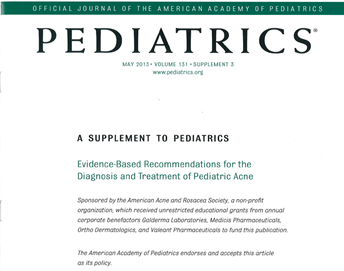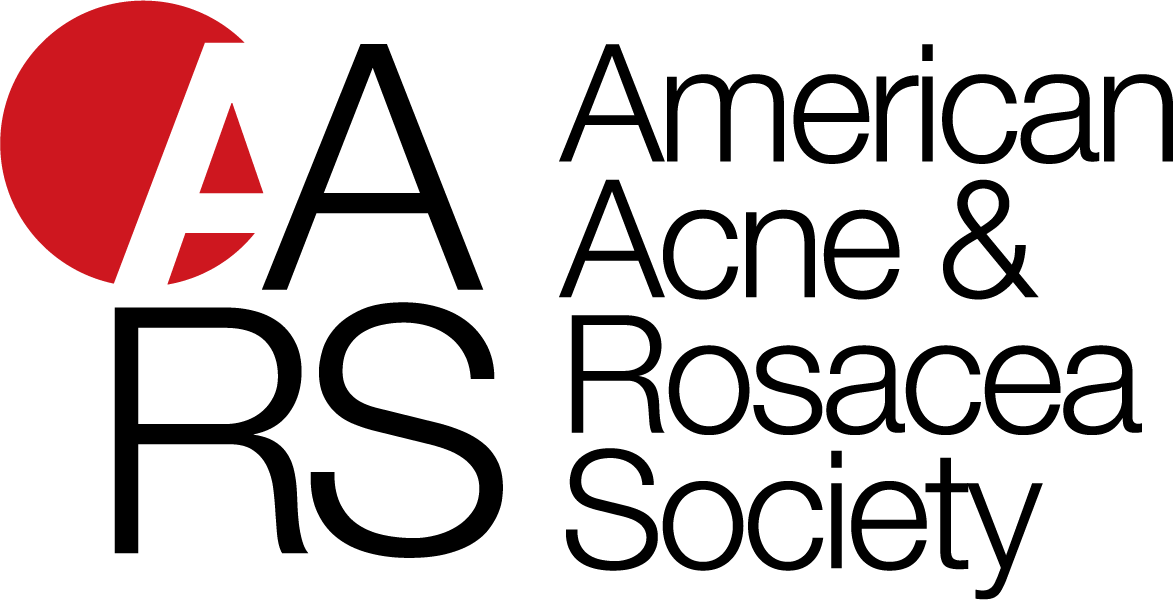National Pediatric Acne Treatment Guidelines
AARS Acne Guidelines Endorsed by The AAP
The American Academy of Pediatrics (AAP) has endorsed the American Acne and Rosacea Society’s first detailed, evidence-based clinical guidelines for the diagnosis and treatment of pediatric acne. The guidelines, titled, “Evidence-Based Recommendations for the Diagnosis and Treatment of Pediatric Acne,” appeared in the May 2013 supplement to Pediatrics.
Background
Acne is one of the most common skin conditions in children and adolescents, and there are increasing amounts of acne seen in younger age groups. In addition, acne and acne-like conditions occur at different ages in childhood, including neonates, infants, and young children, sometimes associated with significant disease processes.
Although acne is one of the most common skin conditions in children and adolescents, there have not been standard guidelines for the management of pediatric acne, and there is tremendous variation in acne treatment amongst health care professionals.
On May 1, 2013, this changed, with the publication in Pediatrics (the journal of the American Academy of Pediatrics) of evidence-based recommendations for the diagnosis and treatment of pediatric acne. These recommendations were developed through the American Acne Rosacea Society (AARS) and endorsed by the American Academy of Pediatrics. The recommendations are a result of a two year effort of experts in acne, pediatric dermatology and pediatrics, co-chaired by Dr. Lawrence Eichenfield, AARS President and Chief of Pediatric and Adolescent Dermatology and Professor of Pediatrics and Medicine (Dermatology) at Rady Children’s Hospital and University of California, San Diego, and Dr. Diane Thiboutot, AARS Past President and Professor of Dermatology at Pennsylvania State University College of Medicine.

The publication titled ‘Evidence-Based Recommendations for the Diagnosis and Treatment of Pediatric Acne’ is authored by Drs. Lawrence Eichenfield, Andrew Krakowski, Caroline Piggott, James Del Rosso, Hilary Baldwin, Sheila Fallon Friedlander, Moise Levy, Anne Lucky, Anthony Mancini, Seth Orlow, Albert Yan, Keith Vaux, Guy Webster, Andrea Zaenglein and Diane Thiboutot.
Many issues in acne were identified, researched, discussed and distilled into recommendations that should help with appropriate diagnosis and treatment of acne. “Acne can have tremendous negative psychological as well as physical effects. And we really have the tools to minimize these problems, said Dr. Eichenfield, lead author. “I tell my patients that essentially all acne can be wiped out, but that we work to figure out what is the least amount of skin care and medicine we need to do it. These expert guidelines will help to improve knowledge and management of acne in all age groups.”
The article discusses categorization of acne, as well as acne mimickers, in different age groups, including neonates, infants, young children, pre-adolescents, and teenagers. Topics discussed include diet and acne, the effectiveness, safety and potential side effects of over the counter products, topical retinoids (vitamin A-based medicines), antibiotics, hormonal therapies, and isotretinoin (a systemic retinoid often called “Accutane,” the original trade name). It includes visual and detailed algorithms to care for mild, moderate or severe disease, essentially flow charts to help practitioners navigate a person’s treatment selections based on the type and severity of acne. Click here to get your copy today!
The American Academy of Pediatrics is an organization of 60,000 primary care pediatricians, pediatric medical subspecialists and pediatric surgical specialists dedicated to the health, safety and well-being of infants, children, adolescents and young adults. For more information, visit www.aap.org

